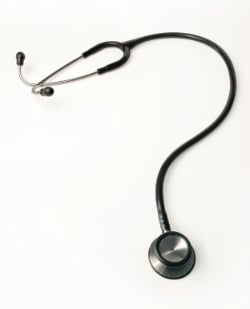
9 questions about enterovirus D-68
16 September 2014
1. What is enterovirus D-68 (E-V D-68) and why haven’t we heard anything about it before?
Enterovirus D68, or EV-D68, was first discovered in 1962 in California. Until now, it has only been tied to smaller clusters of disease in Asia, Europe and around the U.S until earlier this month, when higher numbers of children in the U.S. have been hospitalized with suspected and confirmed cases.
Enteroviruses are very common (100 types), especially toward the end of the summer and the fall months. The Centers for Disease Control and Prevention (CDC) estimate that 10 to 15 million infections occur in the United States each year. But this type of enterovirus — Enterovirus D68 — appears to be exacerbating breathing problems in children with asthma.
2. Who is most susceptible to catching the virus?
Children, particularly those under five and who have underlying respiratory troubles, such as asthma, are more at risk of developing respiratory symptoms if they catch the virus.
3. How is the virus transmitted?
Enteroviruses are excreted in respiratory secretions and in stools. When an infected person coughs, sneezes, or touches contaminated surfaces, just like with the common cold, the virus can be transmitted. Enteroviruses are very hardy once excreted in the environment.
4. How is the virus diagnosed?
A doctor will take a swab from a patient’s nose and send the specimen off to a lab to confirm the diagnosis. The test detects a variety of respiratory viruses, including enteroviruses. However, it is impossible without further testing to know which enterovirus is causing the disease.
5. What are the symptoms?
Mild symptoms may include fever, runny nose, sneezing, cough, and body and muscle aches. However, it’s important to note that the vast majority of children who would contract EV D-68 would handle it just like any other cold and be just fine.
“The virus may attack some children with more severity as we’ve seen in the United States. So, for that reason it’s a concern but nothing to be alarmed at just yet,” says Dr. Caroline Quach, infectious disease specialist at the Montreal Children’s Hospital. “Parents should not panic if their child develops cold symptoms because, as with any viral infection, there is nothing more to do than treat symptoms until the virus runs its course.”
If a child develops respiratory difficulties, however, parents should consult medical attention.
6. How do you differentiate the virus from the common cold?
“If a child is experiencing shortness of breath, difficulty breathing, wheezing or extremely high fever with irritability, this is an indication that the virus is affecting them and parents should seek treatment from their physician or emergency department,” says Dr. Quach. In most cases, the symptoms will be mild and children will recover normally.
7. Is there anything parents can do to prevent infection in their kids?
“As with flu or cold bugs, keeping surfaces and toys clean and hand-washing are the best ways to prevent infections with enterovirus,” says Dr. Quach.
Much like trying to prevent the spread of a cold or flu, people should avoid touching their eyes, nose and mouth with unwashed hands, according to the Center for Disease Control (CDC). It also recommends frequently disinfecting touched surfaces, such as toys and doorknobs, especially if someone is sick.
8. Is there a treatment available for the virus?
There is presently no vaccine or anti-viral treatment for the virus. Antibiotics will not be helpful. There are, however, supportive treatments that can help deal with the symptoms including extra oxygen and medications to counteract the wheezing and inflammation of the bronchi.
9. How serious is the virus?
Most children will react to the virus like they have a common cold, exhibiting mild or no symptoms at all. “Causes for concern will be children who experience shortness of breath, difficulty breathing and wheezing significantly, and these children will need to be taken to hospital for further evaluation,” says Dr. Quach.
